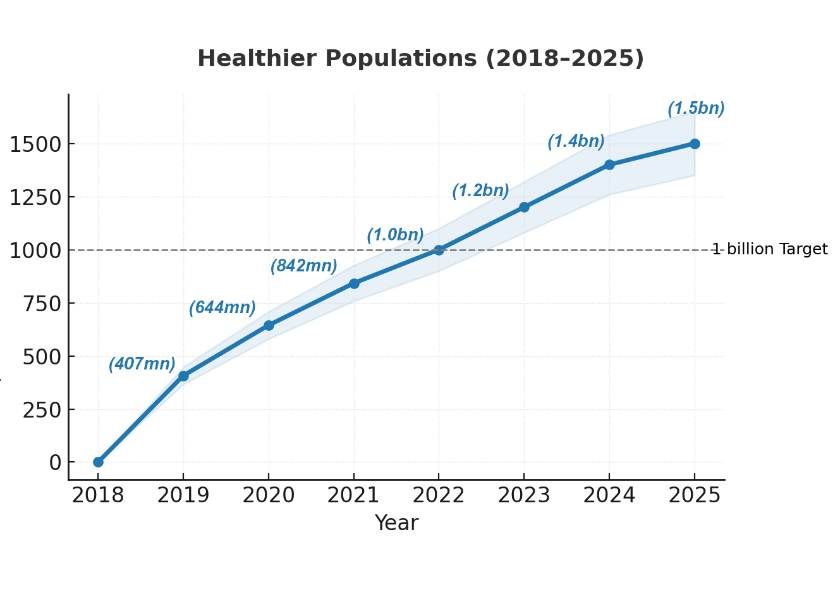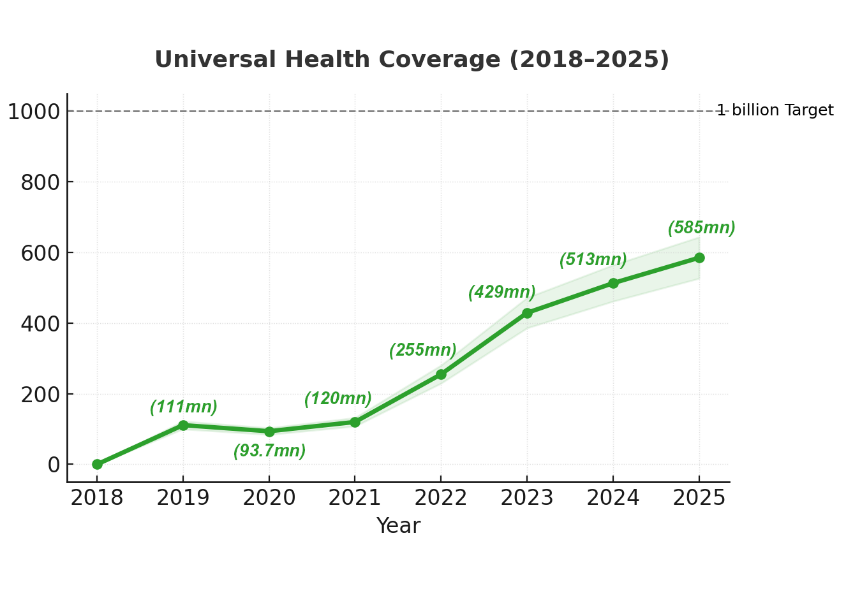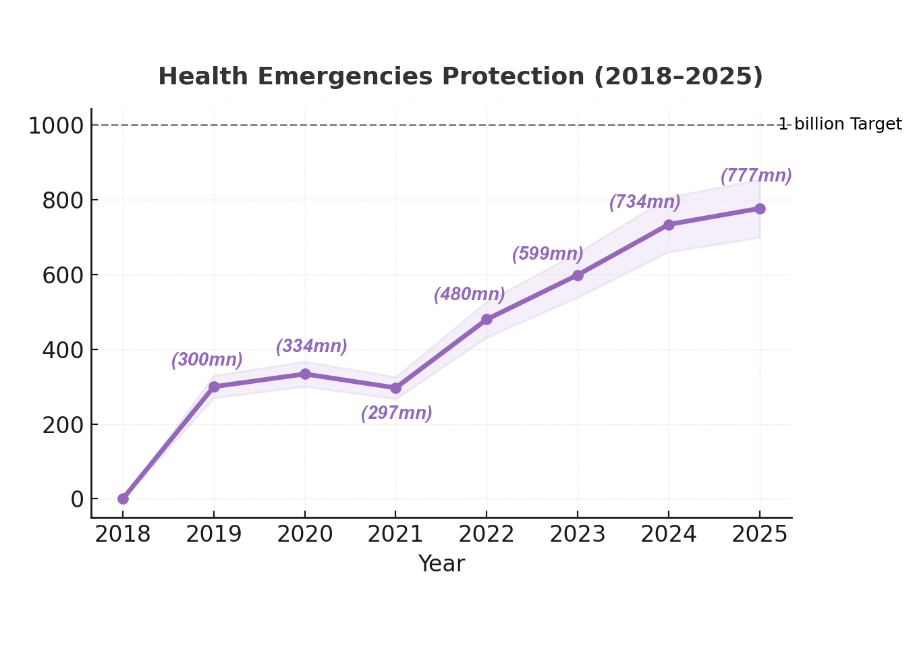
Update on WHO’s Triple Billion Targets
- Healthcare and General ServiceHealthcare Infrastructure and Assets
- October 30, 2025
Highlights:
- WHO progressing toward Triple Billion targets focused on health, UHC, and emergency protection
- 5 billion people expected to benefit by 2025, though full SDG goals may not be met by 2030
- UHC and emergency protection remain off-track, needing accelerated global action
The World Health Organization (WHO), along with Member States and partners, is striving to attain the Triple Billion targets and the health-related Sustainable Development Goals (SDGs). The major focus areas include improving health and wellbeing, ensuring Universal Health Coverage (UHC), and protecting against health emergencies.
The Triple Billions strategy, based on 46 outcome indicators, aims to achieve the SDGs by 2030. These indicators allow countries to prioritise specific outcomes based on their national health strategies, ensuring relevance for all Member States.
1. Healthier Populations
The current trajectory suggests that the goal of one billion more people enjoying better health and well-being is likely to be achieved by 2025. The primary drivers of this trend include access to potable water, better sanitation facilities, improved hygiene measures and cleaner fuels.
However, at the current pace, progress is expected to fall short of meeting all health-related Sustainable Development Goal targets by 2030. The global population expected to experience better health and wellbeing is forecast to increase by 1.5 billion from 2018 to 2025.
 Source: data.who.int
Source: data.who.int
2. Universal Health Coverage (UHC)
The world is currently lagging behind in achieving UHC for one billion more people by 2025 and achieving the SDG by 2030. However, 30% of countries have made progress in essential health service coverage and financial protection, primarily due to increased HIV service coverage.
Approximately 585 million more people worldwide are expected to have access to essential services by 2025 (with a projected range of 526.1 million to 639.5 million) without experiencing financial hardship as compared to 2018.
 Source: data.who.int
Source: data.who.int
3. Health Emergencies Protection
Global progress is not on track to meet the target of one billion additional people being better protected from health emergencies by 2025. Improvements in disaster readiness, as evaluated by core capacities related to the International Health Regulations (2005), were encouraging in 2022-2023, but vaccination coverage for high-priority pathogens has yet to return to pre-pandemic levels.
By 2025, an estimated 776.9 million more people worldwide are expected to be protected from health emergencies compared to 2018, with the projected range likely to be between 647.4 million and 912.5 million.
 Source: data.who.int
Source: data.who.int




